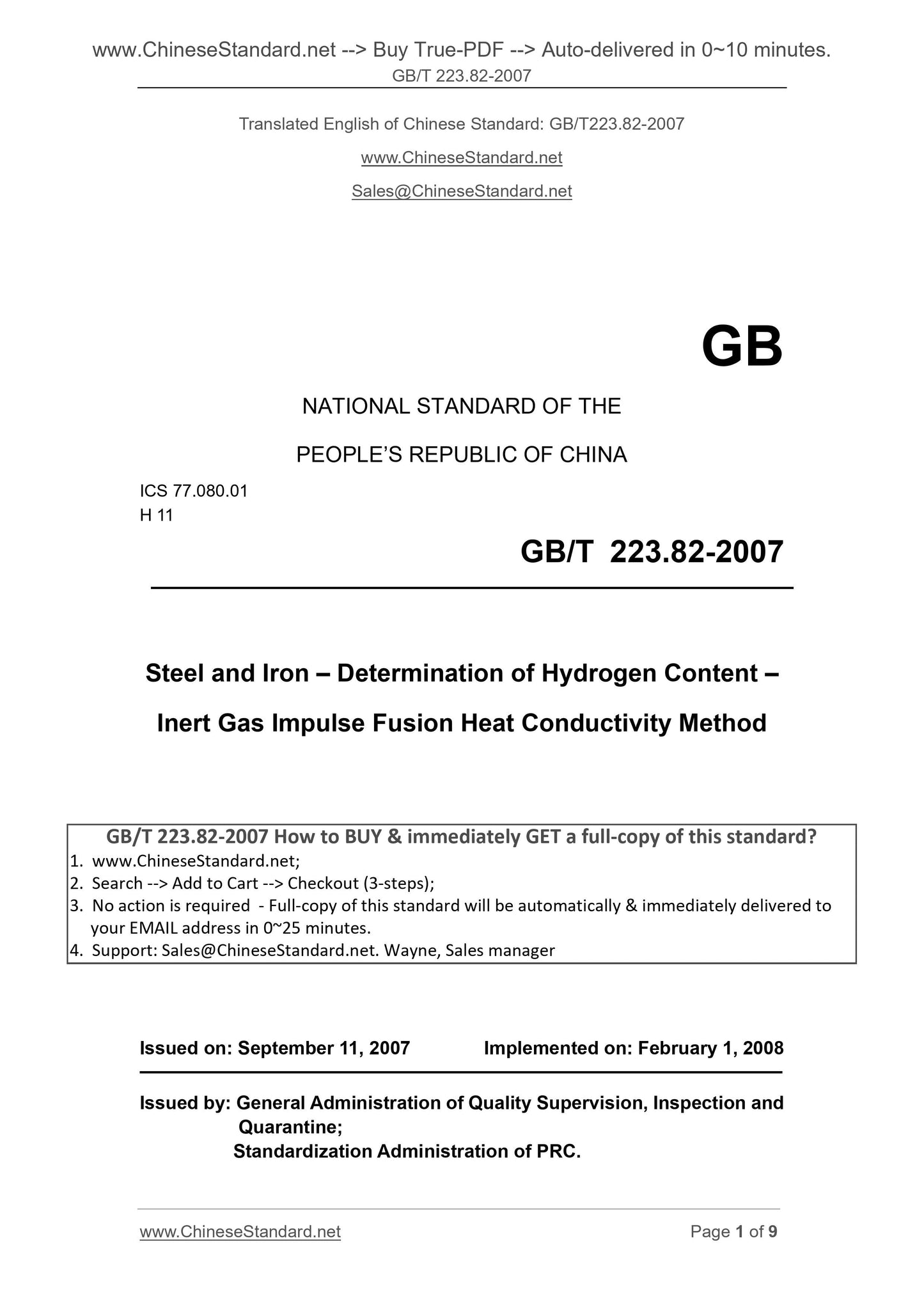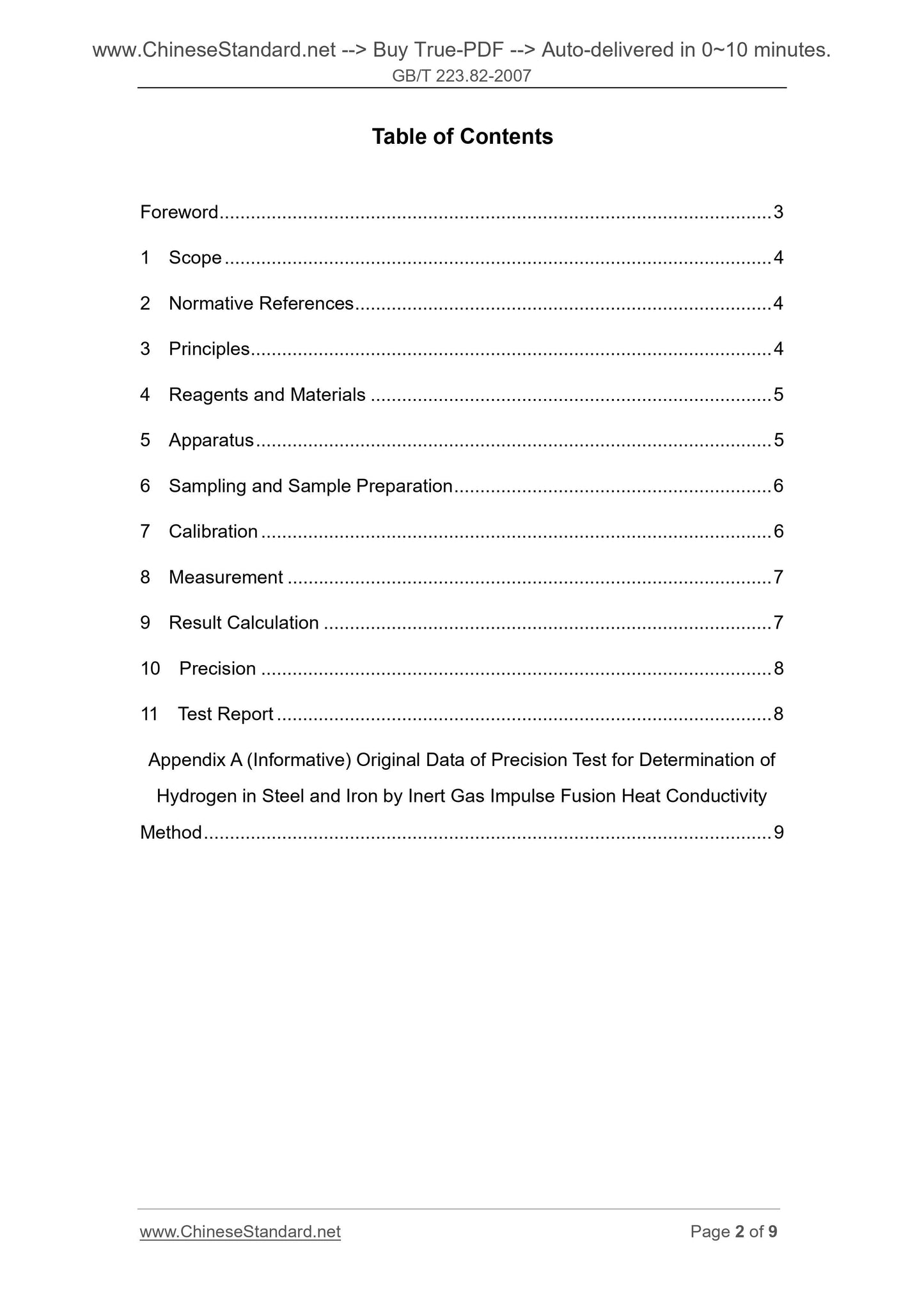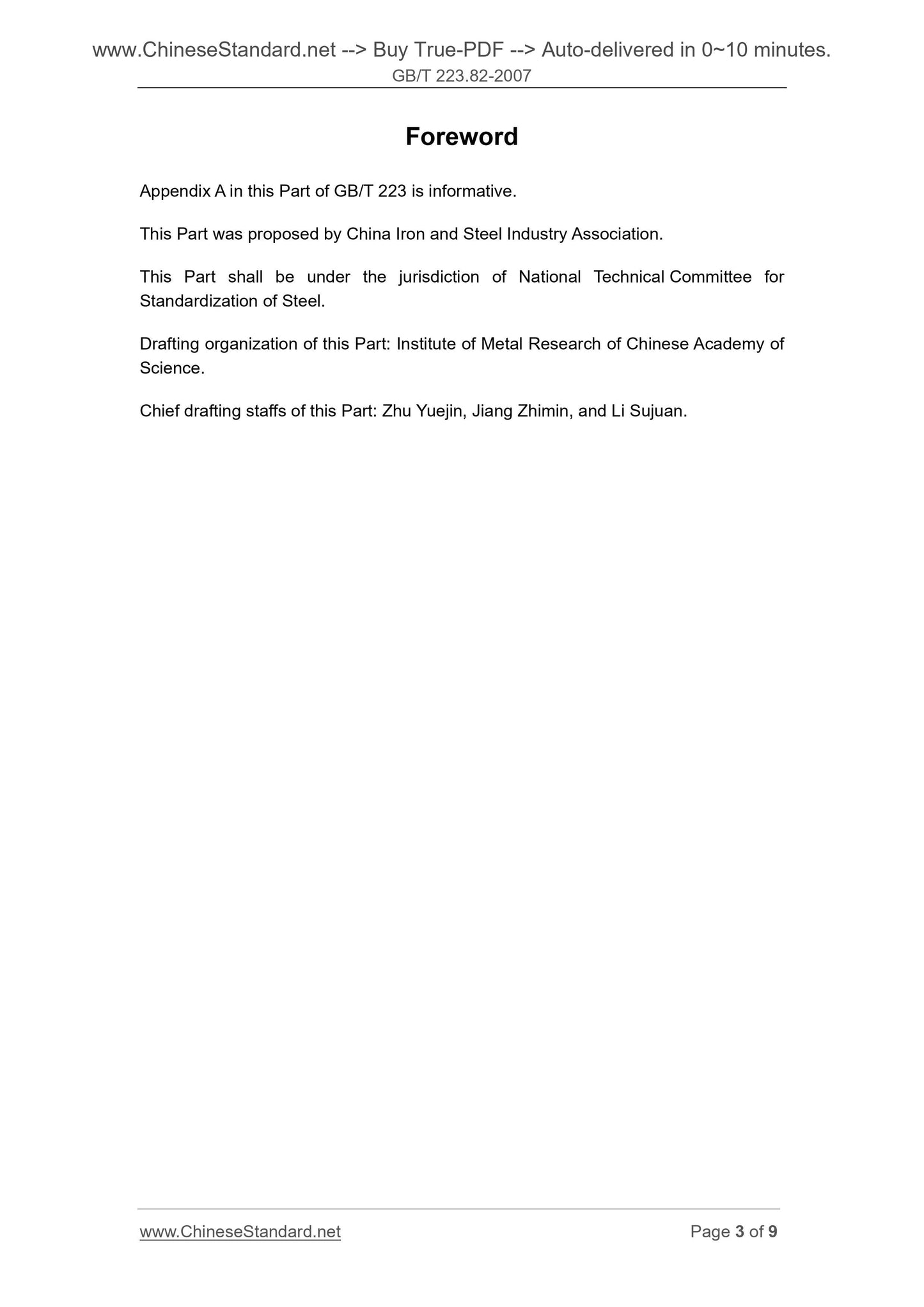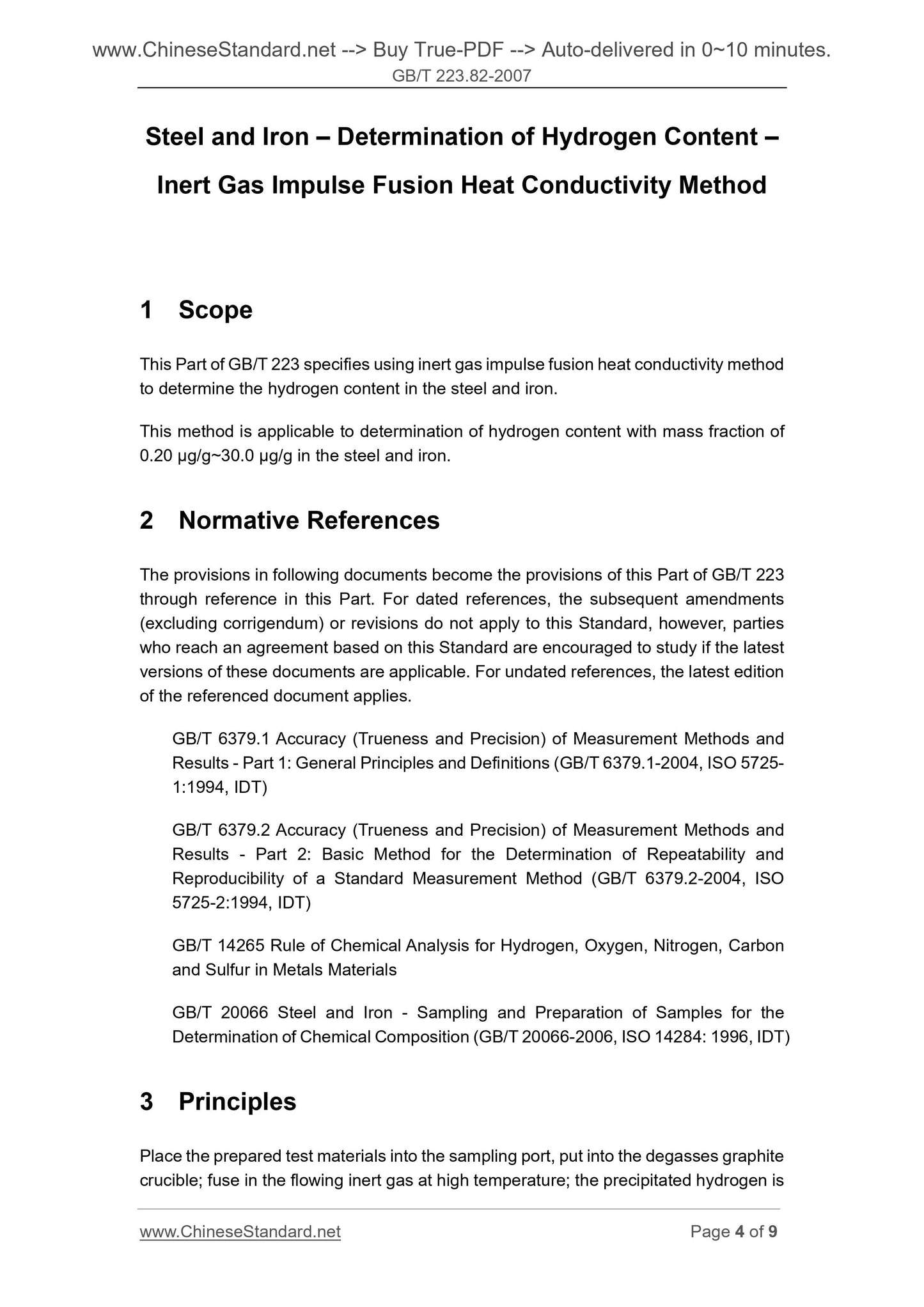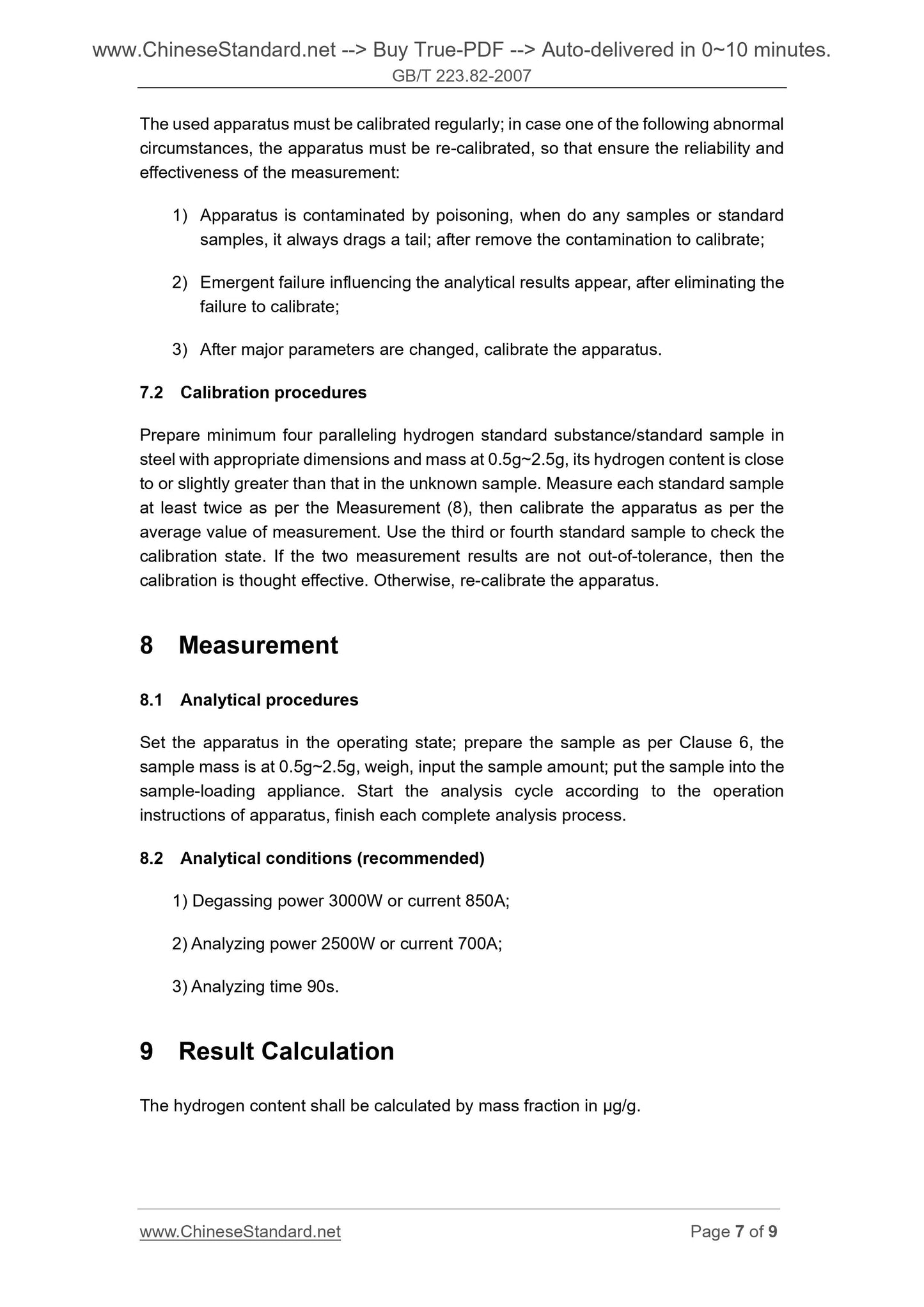1
/
of
5
PayPal, credit cards. Download editable-PDF and invoice in 1 second!
GB/T 223.82-2007 English PDF (GB/T223.82-2007)
GB/T 223.82-2007 English PDF (GB/T223.82-2007)
Regular price
$70.00
Regular price
Sale price
$70.00
Unit price
/
per
Shipping calculated at checkout.
Couldn't load pickup availability
GB/T 223.82-2007: Steel and iron -- Determination of hydrogen content -- Inert gas impulse fusion heat conductivity method
Delivery: 9 seconds. Download (and Email) true-PDF + Invoice.Get Quotation: Click GB/T 223.82-2007 (Self-service in 1-minute)
Newer / historical versions: GB/T 223.82-2007
Preview True-PDF
Scope
This Part of GB/T 223 specifies using inert gas impulse fusion heat conductivity methodto determine the hydrogen content in the steel and iron.
This method is applicable to determination of hydrogen content with mass fraction of
0.20 µg/g~30.0 µg/g in the steel and iron.
Basic Data
| Standard ID | GB/T 223.82-2007 (GB/T223.82-2007) |
| Description (Translated English) | Steel and iron -- Determination of hydrogen content -- Inert gas impulse fusion heat conductivity method |
| Sector / Industry | National Standard (Recommended) |
| Classification of Chinese Standard | H11 |
| Classification of International Standard | 77.080.01 |
| Word Count Estimation | 7,716 |
| Date of Issue | 2007-09-11 |
| Date of Implementation | 2008-02-01 |
| Quoted Standard | GB/T 6379.1; GB/T 6379.2; GB/T 14265; GB/T 20066 |
| Regulation (derived from) | China National Standard Approval Announcement2007 No.11 (Total No.111) |
| Issuing agency(ies) | General Administration of Quality Supervision, Inspection and Quarantine of the People's Republic of China, Standardization Administration of the People's Republic of China |
| Summary | This standard specifies the method for the determination of hydrogen content in the steel using inert gas pulse fusion thermal conductivity method. This method is suitable for the mass fraction of iron and steel 0. 20��g/g ~ 30. 0 ��g Determination/g hydrogen content. |
Share
